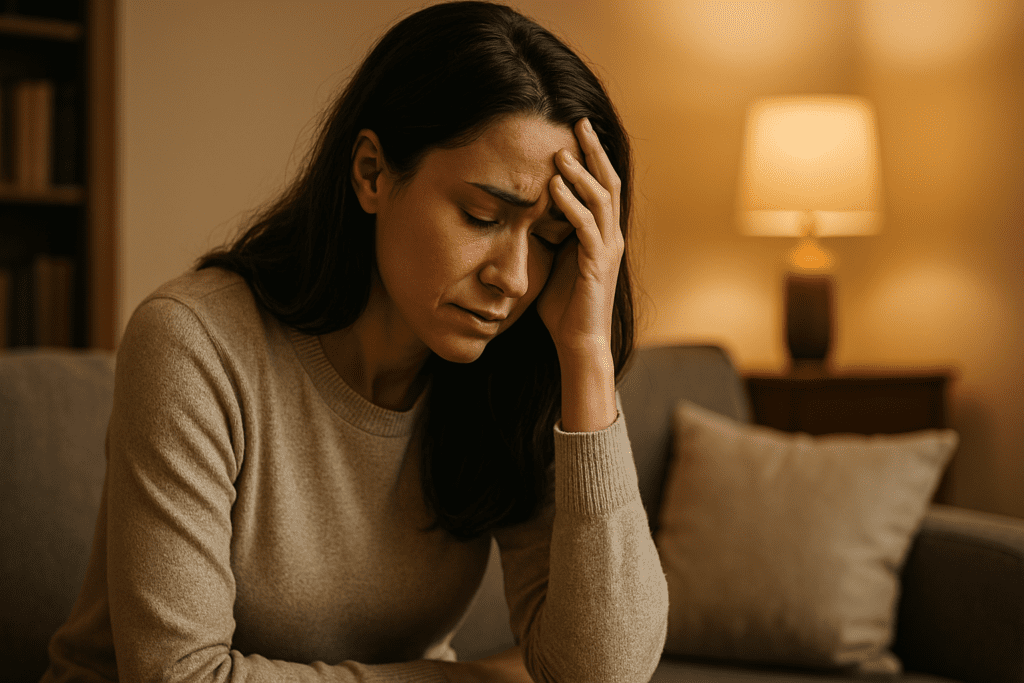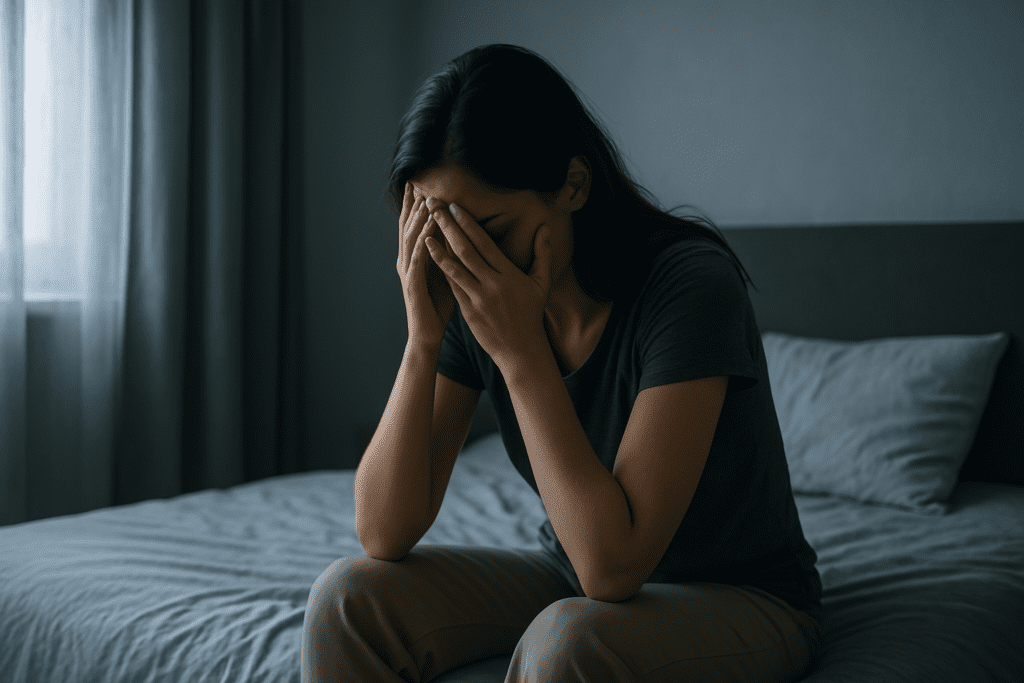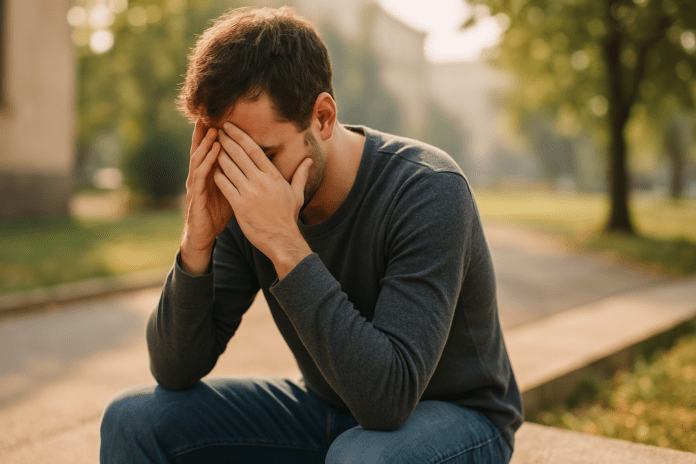Depression is more than occasional sadness or a period of feeling down. It is a complex mental health condition that affects how a person feels, thinks, and handles daily activities. While many people experience temporary emotional lows, clinical depression lingers and often worsens over time without proper support. One of the most critical questions individuals face is: when is therapy needed for depression? Understanding the signs, recognizing the underlying causes, and identifying the best therapy for depression are essential steps toward recovery and well-being.
You may also like: How Does CBT Work to Improve Relationships and Communication? Science-Backed Techniques for Getting Along with Others
The journey toward healing from depression is not one-size-fits-all. People arrive at therapy from diverse life experiences and at varying stages of struggle. While some seek treatment at the earliest sign of emotional discomfort, others wait until symptoms interfere with work, relationships, or basic self-care. Recognizing the moment when professional help becomes not only helpful but necessary requires awareness, self-reflection, and often, the guidance of trusted medical or mental health professionals. The decision to pursue therapy is not a sign of weakness; rather, it reflects courage and a proactive approach to regaining control over one’s mental and emotional health.
Understanding Depression as a Clinical Condition
To understand when therapy is needed for depression, it’s vital first to comprehend what depression truly is. Major depressive disorder (MDD), commonly referred to as clinical depression, is diagnosed when a person experiences a persistent low mood or loss of interest or pleasure in daily activities for at least two weeks. It is typically accompanied by a range of emotional, cognitive, and physical symptoms such as fatigue, difficulty concentrating, changes in appetite or sleep, feelings of worthlessness, and even suicidal thoughts.
Depression can present differently from person to person. For some, it manifests primarily as overwhelming sadness or hopelessness; for others, it may appear as irritability, numbness, or even chronic physical pain without a clear medical cause. Because the condition exists on a spectrum, it may range from mild and intermittent to severe and debilitating. What remains consistent, however, is the disruption it causes in everyday functioning. People often report feeling as though they are moving through life in slow motion, unable to connect with others or find joy in previously enjoyable activities.
Research indicates that a combination of genetic, biological, environmental, and psychological factors contributes to depression. Individuals with a family history of mental illness may be more susceptible, but external stressors such as trauma, job loss, or a chronic medical condition can also trigger depressive episodes. Left untreated, depression can significantly impact not only mental health but also physical health and quality of life.
Early Warning Signs That Indicate a Need for Therapy
Recognizing the early signs of depression can be life-changing, especially when individuals respond by seeking help before the condition escalates. Some of the initial indicators include persistent fatigue, low motivation, social withdrawal, and increased irritability or frustration over minor issues. When these experiences last beyond a few days and begin to interfere with work, academic responsibilities, or relationships, it may be time to consider therapy.
Another red flag is the presence of cognitive distortions. People struggling with depression often fall into patterns of negative thinking that reinforce feelings of despair. These may include thoughts like “I’m a failure,” “Things will never get better,” or “I’m a burden to others.” Such internal narratives can spiral, reinforcing depressive symptoms and making it increasingly difficult to break free without professional intervention.
Behavioral changes, such as declining hygiene, reduced productivity, or reliance on substances like alcohol to cope, are also warning signs. Even if the individual believes they are still functioning well, these shifts can indicate an underlying struggle that may benefit from therapeutic support. When asking yourself or someone you care about when therapy is needed for depression, these subtle but consistent changes are often telling.
Importantly, therapy is not only for those in crisis. Seeking support early can prevent depression from worsening. Just as one would consult a doctor at the first signs of a physical ailment, consulting a mental health professional when emotional health starts to deteriorate is a proactive and wise choice.
How to Determine the Best Therapy for Depression
Finding the best therapy for depression involves more than picking a method at random. It requires a thoughtful evaluation of one’s symptoms, preferences, and goals for treatment. Several evidence-based therapies have been shown to significantly reduce depressive symptoms, and the choice often depends on the individual’s specific needs.
Cognitive Behavioral Therapy (CBT) is among the most widely used and effective treatments. CBT focuses on identifying and challenging negative thought patterns and replacing them with healthier, more realistic beliefs. This approach is especially beneficial for individuals who tend to internalize failure or feel overwhelmed by rumination. The structured, skills-based nature of CBT makes it accessible and empowering for many.
Another powerful option is Interpersonal Therapy (IPT), which targets relationship issues and social functioning. Depression often affects and is affected by our relationships. IPT helps individuals address conflicts, role transitions, grief, and isolation by improving communication and emotional expression. For those whose depression stems in part from interpersonal stress, IPT can be the best therapy for depression.
Psychodynamic therapy delves into unconscious processes and unresolved past experiences that may be influencing present behavior and emotions. While this form of therapy may take longer than others, it can offer deep, long-lasting change. It is particularly helpful for individuals with long-term or recurrent depression.
For individuals with severe depression or those who haven’t responded well to talk therapy alone, a combination of psychotherapy and medication may be most effective. Selective serotonin reuptake inhibitors (SSRIs) and other antidepressants can help balance brain chemistry, making it easier for therapy to take root. A psychiatrist or primary care provider can guide the medication decision, ideally in coordination with a therapist.
Ultimately, the best therapy for depression is the one that aligns with the individual’s symptoms, lifestyle, values, and openness to different treatment modalities. Engaging with a licensed mental health professional can help clarify the best path forward through thorough assessment and collaborative planning.
The Role of Timing: Why Early Intervention Matters
Timing is a critical factor in determining when therapy is needed for depression. Early intervention not only improves the likelihood of recovery but can also reduce the severity and duration of depressive episodes. People who receive timely treatment are often better able to maintain relationships, perform well at work or school, and avoid complications like substance abuse or suicidal ideation.
There is a common misconception that one must wait until hitting “rock bottom” to justify seeking therapy. In reality, the earlier someone reaches out, the less entrenched their depressive patterns become. Early therapy helps individuals build coping strategies, reframe negative thoughts, and strengthen emotional resilience before the condition escalates.
Moreover, untreated depression can lead to lasting neurobiological changes that make future episodes more likely and harder to treat. The concept of “kindling,” derived from epilepsy research, suggests that each depressive episode increases the brain’s sensitivity to future episodes. By intervening early, therapy can disrupt this cycle and potentially reduce the risk of recurrence.
Preventative therapy is also beneficial for individuals at high risk of developing depression, such as those with a family history or those navigating significant life transitions. For example, college students, new parents, caregivers, or individuals experiencing grief may benefit from short-term counseling to build resilience before more serious symptoms emerge.
Taking action sooner rather than later can prevent months or even years of unnecessary suffering. Just as preventive medicine can avert the progression of chronic diseases, proactive mental health care can dramatically alter the course of depression.

Exploring Barriers to Seeking Therapy and How to Overcome Them
Despite the growing awareness of mental health, many individuals delay or avoid seeking therapy due to stigma, fear, or misconceptions about treatment. Cultural beliefs, financial concerns, and accessibility issues can also serve as obstacles. Understanding and addressing these barriers is essential to ensure that more people receive the support they need.
One significant barrier is the belief that seeking therapy is a sign of personal failure or weakness. This perception, often reinforced by societal expectations around self-reliance and emotional stoicism, discourages many from getting help. It is crucial to challenge this stigma by emphasizing that recognizing when therapy is needed for depression is an act of strength and self-awareness, not defeat.
Practical concerns such as cost, transportation, or a lack of local providers can also impede access to care. Fortunately, teletherapy has expanded options, allowing individuals to connect with licensed professionals from the comfort of their homes. Many insurance plans now cover mental health services, and sliding scale fees or community clinics can help reduce financial burdens.
Another hurdle is uncertainty about what therapy involves and how it works. People may fear being judged, misunderstood, or forced to revisit painful memories. Addressing these fears through education and transparency can ease anxiety. Mental health professionals are trained to create safe, compassionate environments where clients are empowered to set the pace of their healing journey.
Normalizing therapy through open dialogue and representation in media and workplaces can also reduce resistance. When individuals see therapy as a standard part of health care—no different than seeing a doctor for high blood pressure—they are more likely to view it as a valuable and necessary investment in well-being.
Finding the Right Therapist and Building a Therapeutic Relationship
Once someone has recognized the need for therapy, the next step is finding a therapist who is a good fit. This process can feel daunting, but the quality of the therapeutic relationship is one of the strongest predictors of successful outcomes. Trust, empathy, and collaboration are key elements that support meaningful progress in treatment.
When searching for a therapist, individuals should consider factors such as credentials, therapeutic approach, cultural competence, and experience with depression. Directories from professional organizations, recommendations from healthcare providers, or mental health apps can help narrow the search. It is perfectly acceptable to speak with multiple therapists before committing to one—this is part of finding the best therapy for depression tailored to individual needs.
A strong therapeutic alliance is built on open communication. Clients should feel heard, respected, and supported in sessions. Progress may be gradual, and some discomfort is natural as difficult topics arise. However, a good therapist will help clients navigate these moments without judgment, offering strategies and insights that foster growth.
Compatibility also includes practical considerations such as availability, location (or telehealth accessibility), and financial arrangements. Regular attendance and consistency enhance therapy’s effectiveness, so logistical fit matters.
Ultimately, therapy is not a passive process but a dynamic, collaborative experience. When the match is right, it becomes a safe container for exploring emotions, developing coping skills, and discovering pathways toward healing and meaning.

Frequently Asked Questions: Therapy for Depression
1. Can depression improve without therapy, and how do I know when it’s time to seek help?
While some people may experience temporary relief from depressive symptoms through lifestyle changes or support from loved ones, clinical depression typically requires professional treatment for sustainable recovery. Recognizing when therapy is needed for depression involves noticing patterns that persist beyond normal emotional fluctuations. If symptoms such as fatigue, apathy, or hopelessness continue for more than two weeks and interfere with daily responsibilities, therapy becomes not just helpful but necessary. Waiting too long may increase the risk of chronic mental health issues, whereas early intervention can lead to quicker, more effective outcomes. Therapy provides tools and guidance that even strong support systems cannot always offer.
2. Is there a “best therapy for depression” that works universally?
No single approach can be declared the best therapy for depression for everyone because depression presents differently in each person. However, Cognitive Behavioral Therapy (CBT) and Interpersonal Therapy (IPT) are consistently among the most effective, evidence-based options. For individuals with complex trauma histories, therapies such as EMDR (Eye Movement Desensitization and Reprocessing) or schema therapy may offer deeper healing. Some people benefit more from a structured, skills-based approach, while others respond better to emotion-focused or insight-oriented therapy. The best therapy for depression is often determined through a combination of clinical assessment and the individual’s unique emotional and psychological needs.
3. How does untreated depression affect long-term cognitive health?
When therapy is needed for depression but not pursued, the consequences can extend far beyond mood. Chronic depression has been linked to structural and functional brain changes, particularly in areas responsible for memory, decision-making, and emotion regulation. For example, prolonged exposure to stress hormones like cortisol can impair the hippocampus, leading to reduced cognitive flexibility and concentration. Over time, untreated depression may increase vulnerability to neurodegenerative conditions, such as Alzheimer’s disease. Engaging in the best therapy for depression early can help reverse or prevent these long-term effects by reducing neuroinflammation and restoring healthier brain activity.
4. What role does cultural background play in determining the best therapy for depression?
Cultural context significantly influences how depression is experienced and expressed, which in turn affects therapy outcomes. For some individuals, emotional pain may manifest more through physical symptoms or spiritual distress. Culturally adapted therapies that respect and integrate a person’s beliefs, values, and language can make treatment more accessible and effective. In communities where mental health stigma is high, finding a therapist who understands the cultural nuances can be essential. The best therapy for depression is one that not only addresses symptoms but also honors the cultural identity and lived experiences of the person receiving care.
5. How do I talk to someone I care about who may need therapy for depression but hasn’t sought help?
It can be difficult to approach a loved one who seems to be struggling, especially if they haven’t acknowledged the problem themselves. The key is to express concern without judgment and to use open-ended questions like, “Have you been feeling overwhelmed lately?” instead of statements like, “You need therapy.” Emphasize that recognizing when therapy is needed for depression is a sign of strength, not weakness. Offering to help find resources or accompany them to their first appointment can also ease the process. Sometimes, just being a steady presence can gently encourage someone toward the best therapy for depression when they’re ready.
6. Can therapy still help if medication hasn’t worked for my depression?
Absolutely. While antidepressant medications can help regulate brain chemistry, they don’t address the underlying thought patterns, behavioral cycles, or emotional wounds that fuel depression. When medication alone falls short, therapy becomes especially important in creating lasting change. In fact, research consistently shows that a combination of therapy and medication yields the best outcomes for many people. Even when medication is effective, adding the best therapy for depression often leads to deeper insight, improved coping strategies, and better long-term resilience. Therapy can help you understand the root of your depression and build sustainable ways to manage it.
7. What does therapy look like when depression is linked to chronic illness or disability?
Depression associated with chronic physical conditions often includes layers of grief, identity shifts, and frustration that general therapy models may not fully address. In these cases, specialized approaches such as health psychology or rehabilitation counseling may be the best therapy for depression. These modalities help patients adapt to changes in function and self-image while managing emotional distress. Therapists often work in tandem with medical teams to coordinate care and ensure mental health isn’t overlooked in the broader treatment plan. Recognizing when therapy is needed for depression in the context of chronic illness can prevent mental health decline and support overall recovery.
8. How does therapy support people during transitional life stages like retirement or parenthood?
Major life changes often act as triggers for emotional instability or depression, even when those changes are positive. Retirement, parenthood, or even relocating can disrupt identity and daily structure. When therapy is needed for depression during such transitions, it helps individuals redefine purpose, manage expectations, and cultivate new routines. Therapists can guide clients through the emotional terrain of role changes, helping them develop insight and build resilience. The best therapy for depression during life transitions acknowledges both the external shifts and the internal adaptation required to maintain mental well-being.
9. How can I evaluate whether therapy is truly working for my depression?
Evaluating therapeutic progress involves more than a reduction in symptoms; it includes greater emotional awareness, improved relationships, and the return of a sense of hope. Consistent sessions over time should lead to measurable changes in thought patterns, daily functioning, and self-compassion. If progress feels stalled after several months, it may be time to revisit goals or consider alternative approaches. The best therapy for depression encourages regular feedback and collaboration, ensuring that treatment evolves with the client’s needs. Therapy is most effective when it feels like a dynamic process rather than a static routine.
10. What are emerging therapies or trends that show promise for treating depression?
Recent innovations are expanding the landscape of treatment, particularly for individuals who haven’t responded well to traditional approaches. Modalities like ketamine-assisted psychotherapy and transcranial magnetic stimulation (TMS) are gaining traction as adjuncts or alternatives to conventional talk therapy. Digital therapies, including app-based CBT and AI-guided support, offer additional flexibility and accessibility. These newer options are not replacements for human connection but can be part of the best therapy for depression when integrated thoughtfully. Staying informed about these emerging trends can empower individuals to make choices that align with their evolving mental health needs.

Conclusion: Knowing When to Seek Help and Choosing the Best Therapy for Depression
Recognizing when therapy is needed for depression is a deeply personal decision, yet one rooted in universal signs that warrant attention. Persistent sadness, disconnection from others, declining function, and distorted thinking are all valid reasons to reach out for help. Early intervention is not only more effective but can prevent depression from escalating into a crisis.
The best therapy for depression is one that addresses the unique patterns, triggers, and goals of each individual. Whether through cognitive restructuring, emotional processing, or relationship repair, therapy offers evidence-based tools that can restore hope and function. The key is to find a treatment approach and therapist that resonate with your needs and values.
Overcoming barriers to therapy—whether societal, practical, or emotional—is an act of courage and self-compassion. No one needs to suffer alone, and support is more accessible than ever. By normalizing mental health care, educating ourselves about options, and advocating for early intervention, we can shift the conversation from enduring depression in silence to thriving with the support we deserve.
In the end, therapy is not just for those in crisis. It is for anyone who seeks to understand themselves more deeply, navigate life with greater ease, and live with renewed vitality. If you’re wondering when therapy is needed for depression, the answer may very well be now—and that decision could be the beginning of lasting change.
signs of clinical depression, emotional wellness therapy, mental health counseling, psychological therapy options, early signs of mental health issues, managing depressive symptoms, therapy for mood disorders, counseling for emotional distress, personalized depression treatment, mental health intervention, therapy for emotional burnout, psychotherapy for chronic sadness, understanding mental health support, talking to a therapist, choosing the right therapist, holistic depression treatment, therapy and medication balance, improving mental health naturally, emotional support strategies, overcoming therapy stigma
Further Reading:
Depression – treatment and management
Depression Treatments for Adults
Depression: Causes, symptoms, treatment, and more
Disclaimer
The information contained in this article is provided for general informational purposes only and is not intended to serve as medical, legal, or professional advice. While Health11News strives to present accurate, up-to-date, and reliable content, no warranty or guarantee, expressed or implied, is made regarding the completeness, accuracy, or adequacy of the information provided. Readers are strongly advised to seek the guidance of a qualified healthcare provider or other relevant professionals before acting on any information contained in this article. Health11News, its authors, editors, and contributors expressly disclaim any liability for any damages, losses, or consequences arising directly or indirectly from the use, interpretation, or reliance on any information presented herein. The views and opinions expressed in this article are those of the author(s) and do not necessarily reflect the official policies or positions of Health11News.


